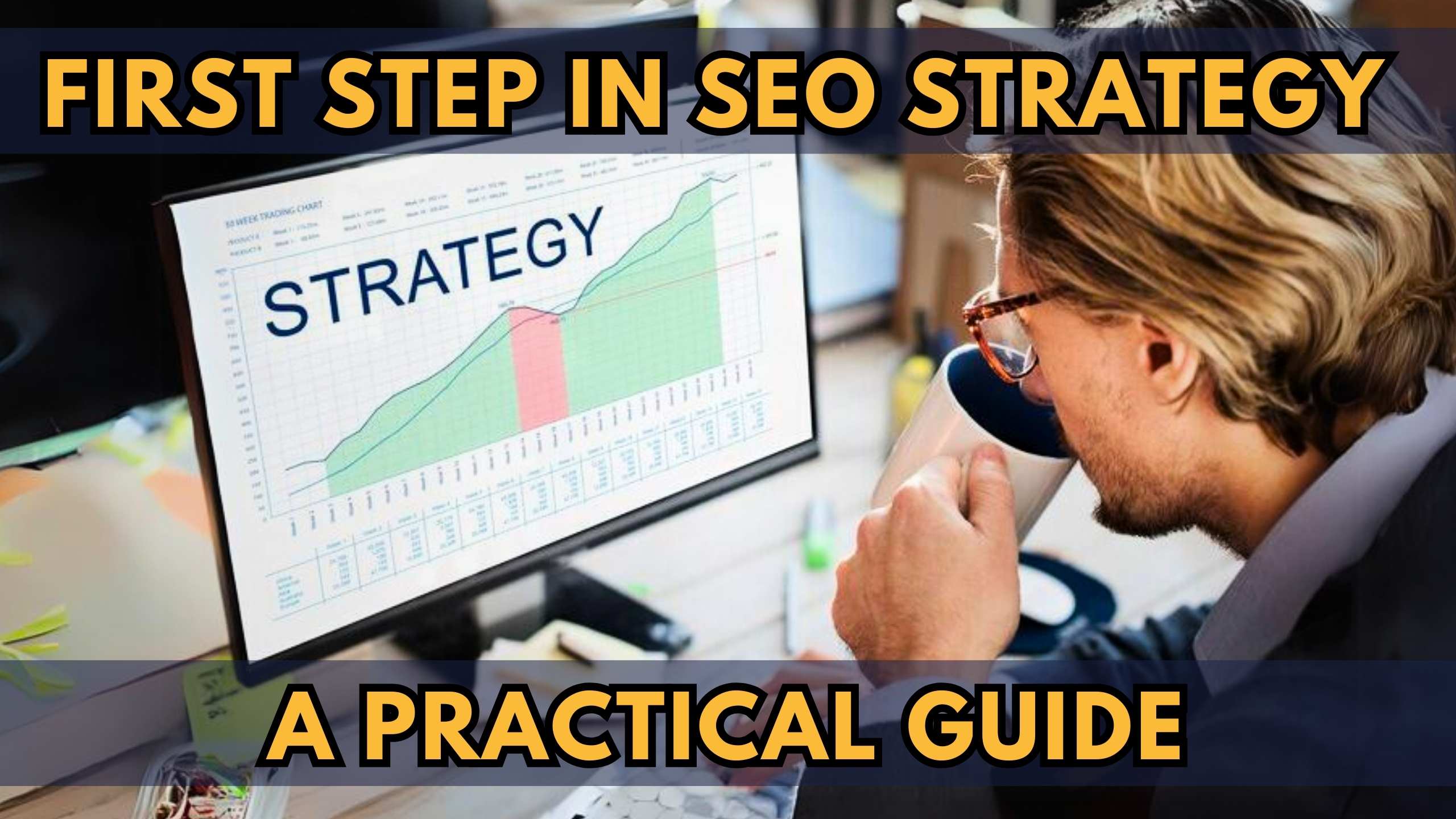First Step in SEO Strategy: A Practical Guide
- Conversational Marketing Software SEO Software Affiliate Marketing Software Marketing Tools


First Step in SEO Strategy: A Practical Guide
Welcome to the intricate world of SEO, where every step is a crucial move toward online success. In this comprehensive guide, we’ll explore the foundational elements you need to consider when embarking on your SEO journey.
Understanding Your Business Goals
Begin by delving into the intricacies of your business objectives. Understanding your target audience, identifying unique selling propositions, and establishing key performance indicators (KPIs) are pivotal steps. This comprehensive approach ensures that your SEO efforts align seamlessly with your broader business strategy, providing a solid foundation for sustained success.
Conduct thorough market research to gain insights into your industry landscape. Utilize tools like SEMrush to analyze competitor strategies, identify gaps in content, and discover untapped keyword opportunities. By understanding your market, you can tailor your SEO strategy to capitalize on trends and consumer behavior, giving you a competitive edge.
Invest time in creating detailed buyer personas. Understanding the demographics, interests, and pain points of your target audience allows you to craft content that resonates. Tools like HubSpot can aid in creating and managing buyer personas effectively, ensuring your content speaks directly to the needs of your audience.
Keyword Research: The Bedrock of SEO
Keywords are the fundamental building blocks of any successful SEO strategy. Beyond identifying relevant terms, consider user intent. Tools like AnswerThePublic can help uncover questions users are asking, guiding your content creation to directly address their queries and needs.
Once you’ve compiled a list of potential keywords, leverage tools like Ahrefs to assess their search volume, competition, and potential impact on your ranking. This data-driven approach ensures that you prioritize keywords that align with your business goals and have the potential to drive meaningful organic traffic.
On-Page Optimization: Crafting SEO-Friendly Content
Optimizing your website’s pages goes beyond strategically placing keywords. Focus on creating valuable, engaging content that not only satisfies search algorithms but also resonates with your audience. Leverage tools like Yoast SEO to receive real-time feedback on your content, ensuring it meets both SEO and readability standards.
Utilize internal linking to establish a hierarchy of content on your website. This not only aids in navigation but also distributes link equity throughout your site. Tools like Link Whisper can assist in identifying relevant internal linking opportunities, enhancing the overall SEO structure of your website.
Consider the user experience as a critical aspect of on-page optimization. A well-designed, mobile-responsive website that loads quickly contributes to positive user experiences and positively influences search rankings. Tools like PageSpeed Insights can help identify and rectify issues affecting your site’s loading speed.
Technical SEO: The Backbone of Your Website
A well-optimized website structure is essential for both user experience and search engine crawlers. Conduct regular audits using tools like Screaming Frog to identify and address technical issues, such as broken links, duplicate content, and crawl errors. By maintaining a healthy website structure, you ensure that search engines can efficiently index your pages.
Structured data markup, also known as schema markup, provides search engines with additional information about your content. Implementing schema markup using tools like Schema.org can enhance the visibility of your content in search results, leading to higher click-through rates.
Building Quality Backlinks
Backlinks remain a cornerstone of SEO, signaling to search engines that your content is valuable and authoritative. Utilize tools like BuzzStream to streamline your outreach efforts, track communication with potential link partners, and manage link-building campaigns effectively.
Content syndication, when done strategically, can amplify your reach and attract valuable backlinks. Tools like Outbrain can help distribute your content across relevant platforms, increasing its visibility and potential for attracting authoritative backlinks.
Diversify your link-building strategies by engaging in guest posting on reputable websites within your industry. Tools like Guestpost.com can assist in identifying opportunities and managing your guest posting initiatives, contributing to a well-rounded backlink profile.
Monitoring and Analytics: Measure, Analyze, Adjust
Implementing tools like Google Analytics and Google Search Console is essential for monitoring website traffic, user behavior, and search performance. Regularly analyze performance metrics, such as bounce rate, average session duration, and click-through rates, to identify areas for improvement and make data-driven adjustments to your strategy.
Conduct regular SEO audits to ensure your website remains in optimal condition. Utilize tools like SEO Spider to crawl your website and identify issues related to on-page SEO, site structure, and indexing. By staying vigilant, you can address potential problems before they impact your search rankings.
Leverage heatmap tools like Crazy Egg to gain insights into user behavior on your website. Understanding where users click, scroll, and spend the most time allows you to optimize your pages for maximum engagement, contributing to improved search rankings.
Relevant SaaS Products to Enhance Your SEO Strategy:
- Ahrefs: Comprehensive SEO tool for keyword research, backlink analysis, and competitor tracking.
- SEMrush: All-in-one marketing toolkit for SEO, PPC, content marketing, and social media management.
- Moz: SEO software offering insights into website health, keyword rankings, and link analysis.
- Pitchbox: Outreach and influencer marketing platform for building quality backlinks.
- Google Analytics: Powerful web analytics tool to track website performance and user behavior.
Conclusion
Mastering the first step in your SEO strategy lays the groundwork for a successful online presence. Remember, it’s an ongoing process of refinement and adaptation. Embrace the journey, stay informed, and keep optimizing for long-term success.
Unlock Secret Deals and Save Big
Unlock exclusive deals on 100+ SaaS tools with Subscribed.fyi. Sign up for free today and enjoy savings of $100,000+ per year. Manage all your subscriptions effortlessly, compare SaaS tools, and make informed decisions with Subscribed.fyi.
Relevant Links:





